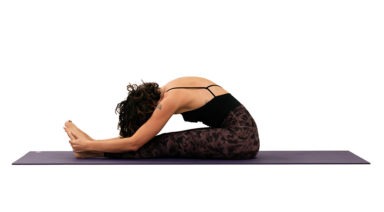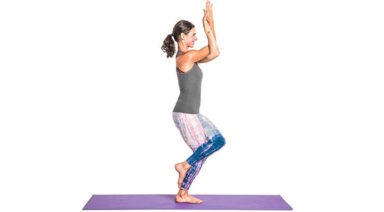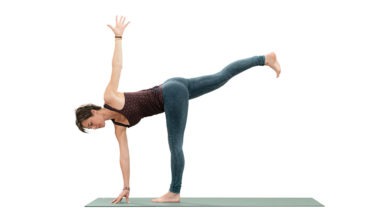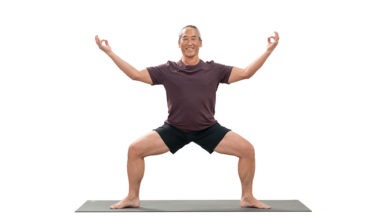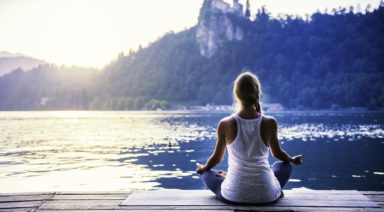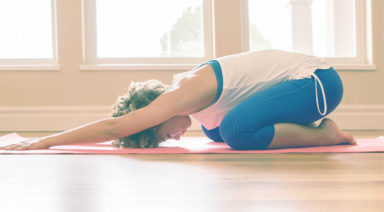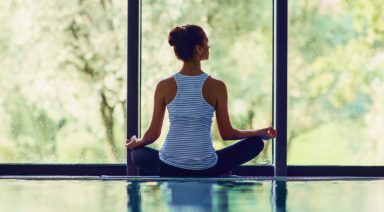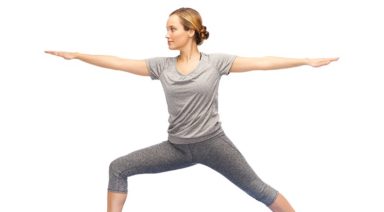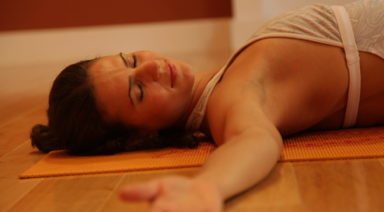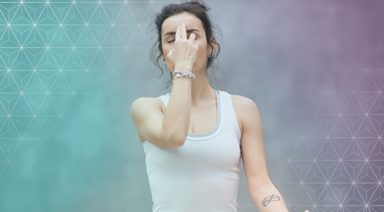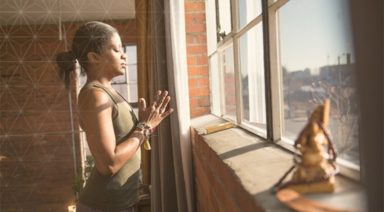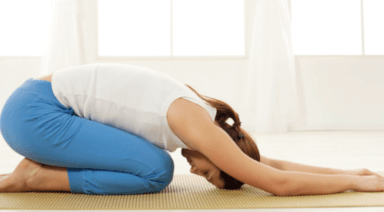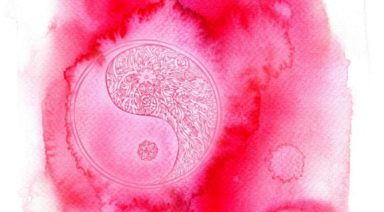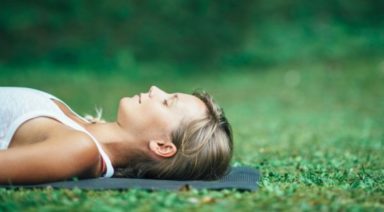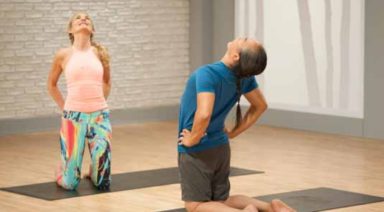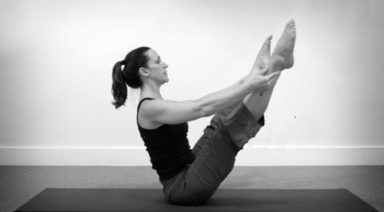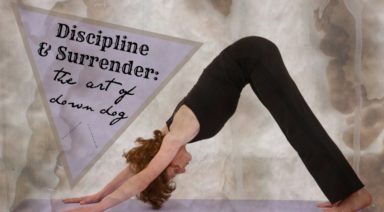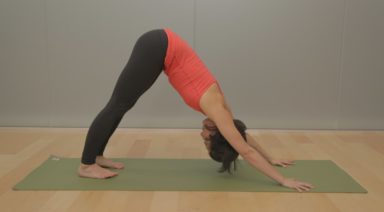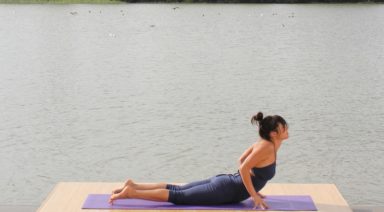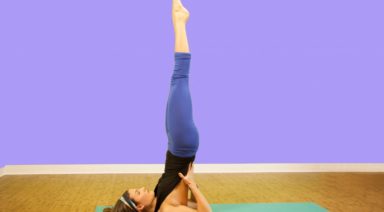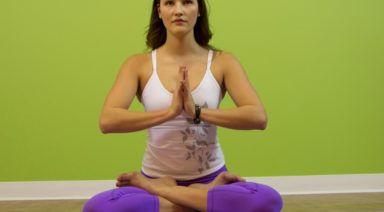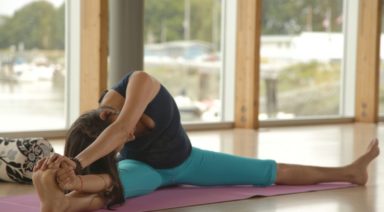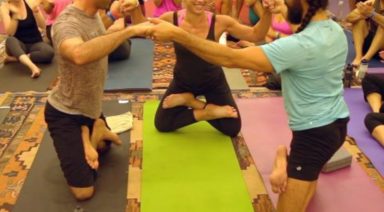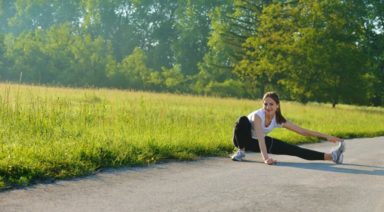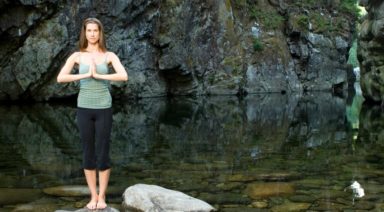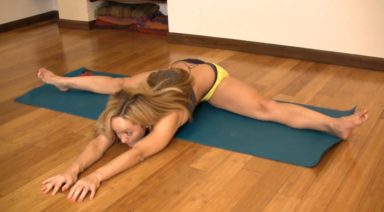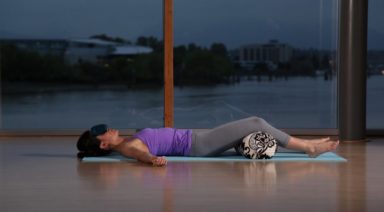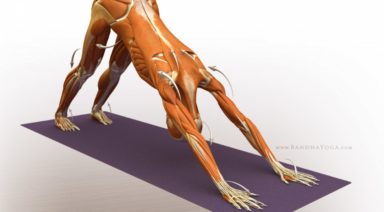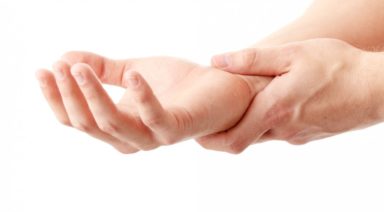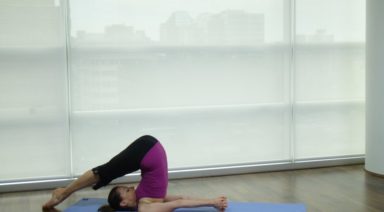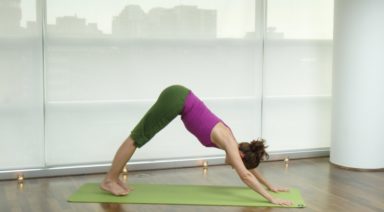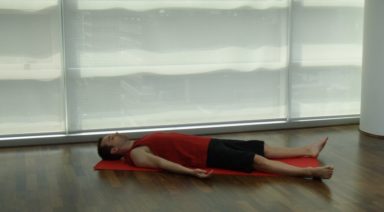Uttana Shishosana: Extended Puppy Pose

ADJUSTMENTS | BENEFITS | SEQUENCING | SANSKRIT | STEPS
An intelligent pose to help lengthen the spine and relieve mental stress, uttana shishosana (OO-ta-NAH she-SHO-sahna), is a hybrid pose — a cross between balasana (child’s pose) and adho mukha svanasana (downward facing dog). Uttana shishosana is a great way to energize the physical and subtle bodies for when you’re feeling fatigued, or when you’ve been stuck behind a desk or in a chair all day. Energetically, the posture has the benefits of increasing both self-confidence and self-love.
Philosophy + Origin
Uttana shishosana is a great reminder of why we practice yoga: to feel better and to find tools to help us live our best lives. Named because of the way dogs and puppies stretch, this posture, while far from fancy, is effective in its simplicity. As humans, it’s easy to want to complicate life, always looking to the past or future in order to find meaning.
Dogs, on the other hand, are great at being present. Loyal and playful, our canine companions have a lot to teach us about relaxing and taking care of ourselves and those we love. As you practice extended puppy pose, allow yourself to settle into your senses. Allow yourself to linger (and lengthen) in the feel-good sensations.
ADJUSTMENTS:
- Neck adjustments: Place your forehead on the ground or use a block under the forehead to alleviate discomfort in the neck.
- Blanket: For tender knees, place a blanket on the ground for added cushion.
STEP-BY-STEP:
- Start on your mat in tabletop pose. Stack your shoulders directly above your wrists and your hips just above your knees. Tuck your toes rather than pointing them.
- Keep your hips above your knees and slowly walk your hands forward.
- Depending on your body and neck, either rest your forehead onto the mat, on a block, or bring your gaze forward so that your chin rests gently on the mat.
- To deepen the stretch along your spine and through the chest and shoulders, press more firmly through the hands as you isometrically pull the hips back to create traction.
- Stay for up to a minute. When you’re ready to exit the posture, shift your hips back into child’s pose.
PREPARATORY POSES:
- Downward facing dog | Adho mukha svanasana
- Cow pose
- Upward salute | Urdhva hastasana
SEQUENTIAL POSES:
- Sphinx pose | Salamba bhujangasana
- Floor bow | Dhanurasana
- Upward-facing dog | Urdhva mukha svanasana
COUNTER POSES:
- Child’s pose | Balasana
- Supine twist | Jathara parivartanasana
SANSKRIT:
- Uttana = intense, extended
- Shisho = puppy
- Asana = pose
PHYSICAL BENEFITS:
- Opens the front of the chest.
- Stretches the muscles of the abdomen.
- Stimulates and strengthens back muscles.
ENERGETIC BENEFITS:
- Activates the sacral (svadhisthana) and heart (anahata) chakras.
- Increases self-confidence and self-love.
- Opens the heart for more acceptance and love.
Legal Disclaimer Before participating in any exercise program or using any fitness products or services that may be described and/or made accessible in or through the Gaia Website and/or the Services, you should consult with a physician or other healthcare provider. Read more about Gaia’s Terms Of Use.
Paschimottanasana: Seated Forward Bend Pose
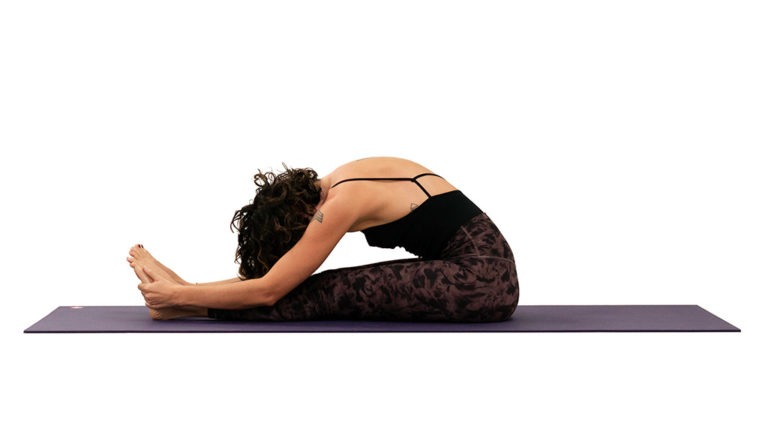
ADJUSTMENTS | BENEFITS | SEQUENCING | SANSKRIT | STEPS
Paschimottanasana (POSH-ee-moh-tan-AHS-ah-nah) invites space to the hamstrings and lower back as well as the mind. While there’s no need to touch your toes in this pose, practicing regularly can help lengthen the muscles in the legs and back to encourage flexibility and ease.
Philosophy + Origin
Paschimottanasana is one of the earliest-known yoga postures, dating back to the Yoga Pradipika. This pose is commonly known as seated forward bend or seated forward fold, but is also referred to as the stretch of the West, referring to the back side of the body.



